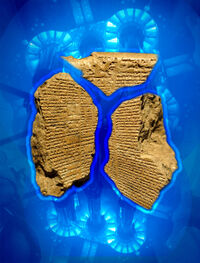High-energy literature: Difference between revisions
From Gnomon Chronicles
| Line 6: | Line 6: | ||
<gallery mode="traditional"> | <gallery mode="traditional"> | ||
File:Argonne ZGS circa 1970.jpg|link=High-energy physics (nonfiction)|[[High-energy physics (nonfiction)|High-energy physics lab]] to enhance short stories using short wavelengths. | |||
File:George Plimpton 1993.jpg|link=George Plimpton (nonfiction)|[[George Plimpton (nonfiction)|George Plimpton]] pleased with results of high-energy literature experiment. | File:George Plimpton 1993.jpg|link=George Plimpton (nonfiction)|[[George Plimpton (nonfiction)|George Plimpton]] pleased with results of high-energy literature experiment. | ||
File:Bacteriophage Exterior.svg|link=Extract of Radium|Caution: mixing [[Extract of Radium]] with high-energy literature generates four-dimensional bacteriophages. | File:Bacteriophage Exterior.svg|link=Extract of Radium|Caution: mixing [[Extract of Radium]] with high-energy literature generates four-dimensional bacteriophages. | ||
Revision as of 11:56, 24 June 2016
High-energy literature is literature which uses techniques from high-energy physics.
Well-known works of high-energy literature include The Taking of Pelham 3.1415.
In the News
High-energy physics lab to enhance short stories using short wavelengths.
George Plimpton pleased with results of high-energy literature experiment.
Caution: mixing Extract of Radium with high-energy literature generates four-dimensional bacteriophages.
Collapse of Meuse bridge (1275) stimulates frantic doxology. Bridge collapse can be averted using literary devices such as Cherenkov radiation.
Re-emitted red light suggests that Fugitive Rubies is secretly manipulating Papillon, say High-energy literature theorists.







